#Point Cloud To Bim Software
Explore tagged Tumblr posts
Text
Why UAE Contractors Are Turning to 4D BIM for Smarter Project Management
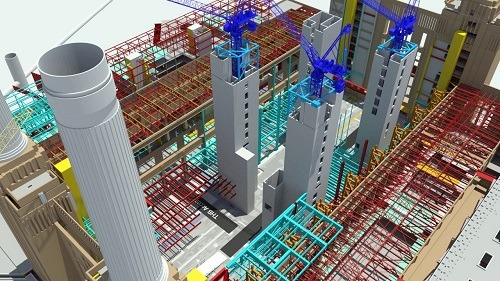
Among the current technology reworking the enterprise is 4D BIM in Construction UAE a powerful innovation that adds the size of time to traditional three-D Building Information Modeling.
#Bim Services Provider#Bim Service Providers In India#Architectural Bim Services India#Architectural Bim Modeling Services#Structural Bim Services India#Structural Bim Modeling Services#Bim Structural Modeling Services#Mep Bim Services#Mepf Bim Modeling Services#Infrastructure Bim Software#Infrastructure Bim Services India#4D Construction Sequencing#4D Bim Software#5D Quantity Take-Off#5D Bim Cost Estimation Quantity Take-Offs#Building Information Modelling 6D#7D Bim For Facilities Management#Point Cloud To Bim Software#Benefits Of Point Cloud Scan To Bim#Cad To Bim Modeling Services#Construction Tender Documentation#Construction Documentation Checklist#Cobie Buildings Designing#Facility Management Service Providers#Structural Precast Services India#Revit Fabrication Service India
0 notes
Text
Expert Point Cloud to BIM Services - Precision and Efficiency
Our Point Cloud to BIM Services provide precise and efficient solutions for converting 3D laser scan data into detailed Building Information Models (BIM). Ideal for architects, engineers, and construction professionals, our services ensure accurate and high-quality 3D representations of existing structures. By leveraging advanced technology and expertise, we streamline project planning, enhance collaboration, and reduce errors. Trust our team to deliver exceptional Point Cloud to BIM Services, transforming your raw data into actionable, detailed BIM models for superior project outcomes.
#Point Cloud To BIM Services#Reality Capture 3D#Reality Capture Services#Reality Capture Software#AEC BIM Services#Revit BIM Services#Architectural BIM Services#Structural BIM Services#BIM Structural Services
0 notes
Text
Seamless Construction Integration with Scan to BIM Services
Scan to BIM services offer a transformative solution in the field of construction and design. Through advanced technologies like laser scanning, these services convert point cloud data captured from existing structures into accurate and detailed 3D Building Information Models (BIM). This process facilitates precise as-built documentation, enabling architects, engineers, and contractors to work with a digital representation of the actual site. Scan to BIM services enhance project planning, minimize errors, and contribute to a more efficient and collaborative construction process. Whether for renovation projects, facility management, or new constructions, Scan to BIM services play a pivotal role in improving accuracy and streamlining workflows throughout the project lifecycle.
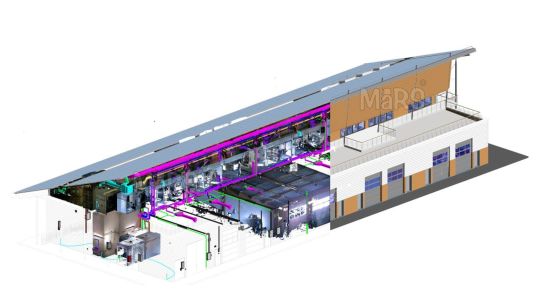
#Scan to BIM Services#Point Cloud to BIM Services#Point Cloud Modeling Services#Scan to BIM Software#Scan to BIM Revit
0 notes
Text
Exploring the Diverse Landscape of BIM Software in Construction: A Comprehensive Guide
Introduction: In the ever-evolving field of construction, Building Information Modeling (BIM) has emerged as a transformative technology that revolutionizes the way buildings are designed, constructed, and managed. BIM software plays a pivotal role in enhancing collaboration, improving efficiency, and minimizing errors throughout the construction process. This article delves into the various…
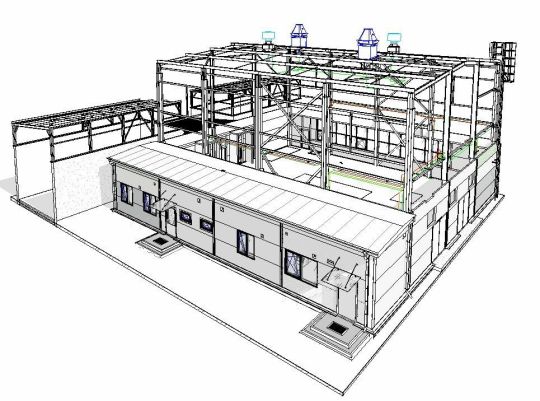
View On WordPress
#architectural design software#as-built documentation#BIM model accuracy#BIM software#Building Information Modeling#collaboration platforms#construction industry advancements#construction management software#construction project efficiency#Construction Technology#cost estimation tools#facility maintenance optimization#facility management solutions#laser scanning technology#LiDAR applications#MEP systems modeling#point cloud integration#project stakeholders collaboration#real-time coordination#structural engineering tools#sustainable building practices
0 notes
Text

NAVIGATING PROJECT MANAGEMENT IN THE AEC INDUSTRY
Navigating Project Management in the AEC industry involves a series of interconnected tasks that require effective planning, execution, monitoring, and control. By following best practices and leveraging project management methodologies such as APM, SCRUM, KANBAN, or the Traditional WATERFALL Project Management Methodology, the AEC professionals can successfully deliver complex projects while meeting stakeholder expectations and achieving project objectives.
As an architectural manager with a Master of Architecture degree and an architectural engineering degree from reputable institutes, having experience in project and design management for large-scale commercial facilities, multi-story offices, and high-rise administration buildings, I can provide the necessary artifacts to enhance project success, improve team collaboration, and effectively handle project complexities in the architecture, engineering, and construction (AEC) sector.
1. Set Clear Goals and Objectives:
Define project scope, including deliverables and constraints.
Establish SMART (Specific, Measurable, Achievable, Relevant, Time-bound) goals.
Align goals with stakeholder expectations and project requirements.
Obtain buy-in from key stakeholders on project objectives.
2. Develop a Comprehensive Project Plan:
Create a detailed work breakdown structure (WBS) to organize project tasks.
Define project milestones and dependencies.
Develop a project schedule with timelines and resource allocation.
Identify risks and develop a risk management plan.
Establish a budget and financial plan for the project.
3. Foster Effective Communication:
Establish communication channels and protocols for project team members.
Hold regular project meetings to discuss progress, issues, and updates.
Use clear and concise language in all communications.
Encourage open and transparent communication among team members.
Address communication barriers and conflicts promptly.
4. Embrace Technology and Communication:
Utilize project management software for task tracking and collaboration.
Implement communication tools such as emails, instant messaging, and video conferencing.
Leverage cloud-based platforms for document sharing and version control.
Provide training and support for team members on project management tools.
Stay updated on new technologies and tools to improve project efficiency.
5. Manage Change Effectively:
Establish a change control process to evaluate and approve changes to project scope.
Communicate changes to stakeholders and assess their impact on project objectives.
Update project documentation and plans to reflect approved changes.
Monitor changes to prevent scope creep and ensure project alignment with goals.
Evaluate the risks and benefits of proposed changes before implementation.
6. Foster Collaboration and Teamwork:
Encourage team members to share ideas, feedback, and best practices.
Foster a collaborative work environment that values diversity and inclusivity.
Promote team building activities and recognize team achievements.
Facilitate cross-functional collaboration and knowledge sharing.
Resolve conflicts and promote a positive team culture.
7. Continuously Monitor and Evaluate Progress:
Track project performance against key performance indicators (KPIs).
Conduct regular project reviews to assess progress and identify areas for improvement.
Monitor project risks and issues and take corrective actions as needed.
Evaluate project outcomes against initial goals and objectives.
Use lessons learned to make informed decisions and optimize project performance.
By focusing on these subtasks within each point, project managers can enhance project success, improve team collaboration, and effectively manage project complexities in the Architecture, Engineering, and Construction (AEC) industry.
Sonetra KETH (កេត សុនេត្រា) •Architectural Manager, Project Manager, BIM Director •建築師經理, 專案經理, BIM總監 •Giám đốc kiến trúc, Giám đốc dựán, Giám đốc BIM •RMIT University Vietnam + Institute of Technology of Cambodia
#Pinned#Avatar#sonetra-keth#Badge image.#Nov 1#2023#Sonetra KETH#Architectural Manager#Project Manager#BIM Director#Thought Leadership#Design Management#Project Management#BIM Management#建筑师经理、专案经理、BIM总监#Giám đốc Kiến Trúc#Giám đốc Dựán#Giám đốc BIM#<meta name=“google-adsense-account” content=“ca-pub-9430617320114361”>#Sonetra Keth#blueprint#Inspired Urban Planning#Urban Planning Framework#crossorigin=“anonymous”></script>#កេត សុនេត្រា#នេត្រា#NETRA#netra#n8tra#N8TRA
5 notes
·
View notes
Text
3D Laser Scanning – Types | Benefits | Applications

3D Laser Scanning
3D laser scanning techniques have been developed since the end of 1990s for 3D digital measurement, documentation and visualization in several fields including 3D design in processing industry, documentation and surveying in architecture and infrastructure. By using a 3D laser scanner, a tunnel or underground construction can be digitized in 3D with a fast-scanning speed and high resolution up to “mm” level.
The scanning data consists of not only XY-Z co-ordinates but also high-resolution images, either gray-scale (with reflex intensity data) or color (with RGB data), and then can be transformed into a global co-ordinate system by control survey. Therefore, any rock engineering objects with its as-built situation can be quickly recorded as the 3D digital and visual format in a real co-ordinate system and provides a potential application for 3D measurement, documentation and visualization with high resolution and accuracy.
In modern engineering the term ‘laser scanning’ meaning is the controlled steering of laser beams followed by a distance measurement at every direction. This method, often called 3D object scanning or 3D laser scanning, is used to rapidly capture shapes of objects, buildings, and landscapes.
What is 3D Laser Scanning?
3D laser scanning is a non-destructive, non-contact method of capturing data that can be used for rapid and accurate creation of three-dimensional files, for archiving and digital manipulation. A 3D laser scanner emits a narrow laser beam that hits a target object, gathering millions of closely spaced measurements in a matter of minutes. These scanned measurements are put together and grouped into compressed point cloud databases, which can be processed to generate a 3D dense representation of the object.
3D Scanners Bridging Physical and Digital Worlds
3D scanners are tri-dimensional measurement devices used to capture real-world objects or environments so that they can be remodeled or analyzed in the digital world. The latest generation of 3D scanners do not require contact with the physical object being captured.
3D scanners can be used to get complete or partial 3D measurements of any physical object. The majority of these devices generate points or measures of extremely high density when compared to traditional “point-by-point” measurement devices.
How 3D Scanning Works?
Scanning results are represented using free-form, unstructured three-dimensional data, usually in the form of a point cloud or a triangle mesh. Certain types of scanners also acquire color information for applications where this is important. Images/scans are brought into a common reference system, where data is merged into a complete model. This process — called alignment or registration — can be performed during the scan itself or as a post-processing step.
Computer software can be used to clean up the scan data, filling holes, correcting errors and improving data quality. The resulting triangle mesh is typically exported as an STL (STereoLithography or Standard Tessellation Language) file or converted to Non-uniform Rational B-Spline (NURBS) surfaces for CAD and BIM modeling.
Types of Laser Scanning
1. Airborne Laser Scanning (LiDAR)
Airborne laser scanning (LiDAR = acronym for ‘Light detection and Ranging’, also LIDAR) is a scanning technique for capturing data on the features of, and objects on, the surface of the earth. It is an important data source in environmental studies, since it is capable of mapping topographic height and the height of objects on the surface to a significant vertical and horizontal accuracy, and over large areas. Airborne laser scanning is an active remote sensing technology able to rapidly collect data from vast areas.
2. Terrestrial Laser Scanning
Terrestrial Laser Scanners (TLS) are positioned directly on the ground, or on a platform placed on the ground, and are normally mounted on a tripod. TLS is, in its essence, an improved version of the laser tachometric measurement toolkit (the so-called total station) that is based on the combination of distances and angles measured from a fixed point. Tachometric laser scanners digitize objects of interest with a frequency of 1000 Hz or higher. Each point is measured per one oblique distance and, additionally, two orthogonal angles are measured. Most TLS are long-range devices. Nowadays, a great variety of TLS is available with different range and pulse frequencies.
3. Handheld (portable) Laser Scanning
There has recently been an increase in the application of handheld scanners. Their basic advantage is their portability. Scanners that are attached to light portable stands fall in this category as well, even though they are not ‘handheld’ in the true sense of the word. Primary used in reverse engineering, nowadays they are very often employed in digital documentation of moveable cultural heritage objects.
4. Long- and Short-Range Laser Scanning
Long-range laser scanning is tailored for surveying and monitoring expansive areas or structures. Using high-powered lasers and advanced optics, it covers distances from yards to miles/meters to kilometers. Employing time-of-flight or phase-based technologies, it finds applications in geological surveys, urban planning, infrastructure monitoring, and archaeological site mapping. Short-range laser scanning focuses on high-precision tasks within confined spaces. Covering distances from centimeters to meters/ feet to yards, it utilizes structured light or laser triangulation. Widely used in industrial metrology, 3D scanning, quality control, and cultural heritage preservation, it excels in capturing fine details with accuracy.
3D Scanning File Formats
TZF: This format is a Trimble scan files in a zipper format. The software exports the current project as a folder with:
• One TZF format file per station • One TCF format file per station if the station has been acquired with images
E57: This format is a file format specified by the ASTM (American Society of Testing and Materials), an international standards organization. The E57 format supports two types of data: Gridded Data and Non-Gridded Data. Gridded Data is a data which aligned in regular arrays.
E57 Gridded Files: The software exports the current project as one LAS 1.2 format file.
E57 Non-Gridded Files: The software exports the current project as one LAS 1.2 format file.
PTX: This format is an ASCII based for scan file format. The software exports the current project as one LAS 1.2 format file.
LAS, Non-Gridded: The format is public file format for interchanging 3-dimensional point cloud data between users. It is binary-based and has several versions: 1.0, 1.1, 1.2, 1.3 and 1.4. The application exports the current project as one LAS 1.2 format files.
POD, Non-Gridded: The POD (Point Database) file format is Bently Pointools’ native point cloud format. The software exports the current project as one POD format file. Points, color, intensity and normal (if available) information are exported.
RCP: This format file is a project file for Recap from Autodesk. The software exports the current project as one RCP format file.
TDX: TDX is Trimble Data eXchange file format, commonly used in some Trimble software applications like TBC (Trimble Business Center) or RealWorks. The software exports the information listed below:
• Stations with registration sets • Created panorama(s) • Measured points • Leveling information
Benefits of 3D Laser Scanning
3D laser scanning has become an indispensable tool across many industries due to its ability to capture highly detailed and more accurate 3D data. Here are some of the key benefits of 3D laser scanning:
High Accuracy
Laser scanning provides extremely accurate measurements, making it effective for applications where precision is critical, such as engineering, construction, and product manufacturing.
Rapid Data Capture
Laser scanners can quickly collect a large amount of data, reducing the risk associated with scanning high buildings and improving field staff safety.
Non-contact Technology
Laser scanning is noninvasive and doesn’t require physical contact with the object or environment being scanned, making it ideal for fragile, hazardous, or hard-to-reach locations.
Comprehensive Documentation
Laser scanning creates detailed and comprehensive digital records of objects, buildings, or landscapes, which are invaluable for preservation and historical archiving.
Visualization
Data from 3D laser scans can be used to create highly realistic visualizations, aiding in the design, analysis, and communication of complex structures and spaces.
Clash Detection
When integrated with building information modeling (BIM), laser scanning helps identify clashes between design plans and existing structures, reducing costly construction errors.
Applications of 3D Laser Scanning
3D Laser Scanning is used in numerous applications: Industrial, architectural, civil surveying, urban topography, reverse engineering, and mechanical dimensional inspection are just a few of the versatile applications. 3D laser scanning technology allows for high resolution and dramatically faster 3D digitizing over other conventional metrology technologies and techniques. Some very exciting applications are animation and virtual reality applications.
1. Construction Industry and Civil Engineering
a. As-built drawings of bridges, industrial plants and monuments b. Documentation of historical sites c. Site modelling and lay outing d. Quality control e. Quantity surveys f. Freeway redesign g. Establishing a benchmark of prre-existing shape/state in order to detect structural changes resulting from exposure to extreme loadings such as earthquake, vessel/truck impact or fire. h. Create GIS (Geographic Information System) maps and Geomatics
2. Reverse Engineering
Reverse Engineering refers to the ability to reproduce the shape of an existing object. It is based on creating a digitized version of objects or surfaces, which can later be turned into molds or dies. It is a very common procedure, which has diverse applications in various industries. Non- contact 3D laser scanning allows even malleable objects to be scanned in a matter of minutes without compression, which could change their dimensions or damage to their surfaces. Parts and models of all sizes and shapes can be quickly and accurately captured. 3D laser scanning for reverse engineering provides excellent accuracies and helps to get products to market quicker and with less development and engineering costs. 3D Laser scanning provides the fast, accurate, and automated way to acquire 3D digital data and a CAD and BIM model of part’s geometry for reverse engineering when none is available. Also, new features and updates can be integrated into old parts once the modeling is accomplished. A practical mechanical and civil engineering application would be to assist in the production of "as built" data and documentation. Currently, many manufacturing or construction activities are documented after the actual assembly of a machine or civil project by a designer or engineering professional. 3D laser scanners could expedite this activity to reduce man-hours required to fully document an installation for legacy.
3. Mechanical Applications
Reverse engineering of a mechanical component requires a precise digital model of the objects to be reproduced. Rather than a set of points a precise digital model can be represented by a polygon mesh, a set of flat or curved NURBS surfaces, or ideally for mechanical components, a CAD solid model. A 3D scanner can be used to digitize free-form or gradually changing shaped components as well as prismatic geometries whereas a coordinate measuring machine is usually used only to determine simple dimensions of a highly prismatic model. These data points are then processed to create a usable digital model, usually using specialized reverse engineering software.
4. Civil Applications
Civil activities could be for a roadway periodic inspection. The digitized roadway data could be contrasted to previous roadway 3D scans to predict rate of deterioration. This data could be very helpful in estimating roadway repair or replacement costing information. When personnel accessibility and/or safety concerns prevent a standard survey, 3D laser scanning could provide an excellent alternative. 3D Laser scanning has been used to perform accurate and efficient as-built surveys and before-and after construction and leveling survey.
5. Design Process
Design process including: a. Increasing accuracy working with complex parts and shapes b. Coordinating product design using parts from multiple sources c. Updating old CD scans with those from more current technology d. Replacing missing or older parts e. Creating cost savings by allowing as-built design services, for example: automotive manufacturing plants. f. “Bringing the plant to the engineers” with web shared scan and saving travel costs.
Conclusion
3D laser scanning equipment senses the shape of an object and collects data that defines the location of the object’s outer surface. This distinct technology has found applications in many industries including discrete and process manufacturing, utilities, construction. Laser scanning technology has matured and developed in the past two decades to become a leading surveying technology for the acquisition of spatial information.
The high-quality data produced by laser scanners are now used in many of surveying’s specialty fields, including topographic, environmental, and industrial. These data include raw, processed, and edited dense point clouds; digital terrain and surface models; 3D city models; railroad and power line models; and 3D documentation of cultural and historical landmarks. 3D laser scanners have a wide range of applications which applicable to very small object to a wide range area.
#3DLaserScanning#ScantoBIMservices#BIMModelingServices#AirborneLaserScanning#TerrestrialLaserScanning#LongRangeLaserScanning#ShortRangeLaserScanning#BIMServices#Benefitsof3DLaserScanning#Applicationsof3DLaserScanning
1 note
·
View note
Text
What is BIM Architectural outsourcing & Drafting Services?
BIM Architectural Services refer to the practice of subcontracting architectural design and drafting tasks to external firms or professionals specializing in Building Information Modeling (BIM). In this arrangement, architectural firms or companies outsource certain aspects of their projects, such as creating detailed drawings, 3D modeling, or BIM coordination, to specialized service providers.
Outsourcing BIM architectural drafting services offers several benefits to architectural firms:
Cost Efficiency: Outsourcing allows firms to access skilled professionals at a lower cost compared to hiring in-house staff. This can result in significant cost savings, especially for projects with fluctuating workloads or specialized requirements.
Expertise and Specialization: BIM outsourcing firms often have a team of experienced professionals with expertise in architectural drafting and BIM technologies. By leveraging their specialized skills, architectural firms can ensure high-quality deliverables and efficient project execution.
Focus on Core Competencies: Outsourcing non-core tasks such as drafting allows architectural firms to focus on their core competencies, such as design creativity, client relationships, and project management. This can lead to improved productivity and better utilization of resources.
Scalability and Flexibility: Outsourcing provides architectural firms with the flexibility to scale their workforce up or down based on project requirements. This agility enables firms to handle peak workloads, meet tight deadlines, and adapt to changing market demands more effectively.
Access to Advanced Technologies: BIM outsourcing firms often invest in the latest BIM software and technologies to deliver innovative solutions to their clients. By partnering with these firms, architectural companies can leverage cutting-edge tools and workflows without investing in expensive software licenses or training.
Overall, BIM architectural outsourcing and drafting services enable architectural firms to enhance their competitiveness, improve project efficiency, and deliver high-quality designs to their clients. By partnering with experienced outsourcing providers, architectural firms can streamline their workflows, reduce overhead costs, and focus on delivering exceptional architectural solutions.
United-BIM Inc. is a certified SBE/MBE BIM Modeling Services Company based in East Hartford, Connecticut. Our services include BIM Architectural Services, Architectural Drafting Services, 3D Rendering Services Structural Modeling and Detailing (Rebar, Precast, others), MEP-FP Modeling and Detailing, BIM Coordination & Clash Detection Services, Revit Family Creation Services, Underground Utility Locating Services, On-site & off-site Coordination Services, Onsite & virtual meetings participation, Point Cloud Scan to BIM, CAD to BIM Services, BIM for Facility Management, Accurate Shop Drawings Creation, As-built Drawings Services, Electrical Design Services & more.
1 note
·
View note
Text
Point To Cloud BIM Drawing and Drafting Services in Bloomington
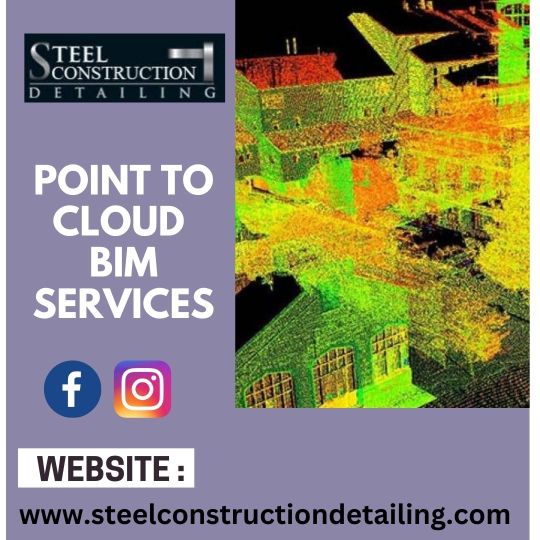
Steel Construction Detailing is providing best services of Point To Cloud BIM Outsourcing Services. Our Point To Cloud BIM Design and Drafting services help architects and engineers create designs that are closely aligned with the real-world environment. Point To Cloud BIM Services take 3D models to the next level by generating detailed CAD drawings. Point To Cloud BIM Detailing Services provide unparalleled accuracy by incorporating real-world data into 3D models. The accuracy of Point To Cloud BIM CAD Drawing Services helps to reduce material waste, costly errors, and delays, ultimately leading to cost savings in the long run. So, Connected with us today for your next Point To Cloud BIM CAD Services.
Why Choose Us ?
- 15+ years of experience - 70+ Design and Drafting Engineering Team - Use Advanced tools and Updated Software - 11000+ completed project - Use international standards and unique codes
Website : https://www.steelconstructiondetailing.com/point-cloud-bim-services.html
#15)#PointCloudToBIMServices#ScanToBIMServices#PointCloudModelingServices#PointCloudToBIMSolutions#PointCloudTo6DBIMServices#PointCloudToBIM5DServices#PointCloudTo7DBIMServices#PointCloudTo4DBIMServices#PointCloudBIMEngineeringServices#PointCloudBIMCADDrawingServices#CADServices#SteelCAD
1 note
·
View note
Text
Laser Scan: Bridging Physical and Digital Worlds with Penta 3D
In today's fast-paced world, accurately capturing existing environments and objects is essential across many industries. This is where laser scan to 3D model technology truly shines, acting as a crucial bridge between the physical world and digital design. This innovative process uses laser scanners to collect millions of precise data points from a real-world object or space, transforming them into a detailed digital "point cloud." This point cloud then becomes the foundation for creating highly accurate and editable 3D models.
The benefits are extensive. Imagine needing to remodel an old building where original blueprints are missing, or reverse-engineering a complex mechanical part without design files. Laser scanning provides an invaluable solution. It offers unmatched accuracy, capturing intricate details that manual measurements simply cannot. This leads to a significant reduction in errors, saving time and resources that would otherwise be spent on costly rework. Furthermore, it dramatically accelerates data acquisition, allowing for rapid documentation of even large and complex sites. This makes it ideal for various applications, from architectural surveys to industrial plant revamps.
Penta 3D stands at the forefront of this revolution. With its advanced software and support for leading laser scanning equipment, Penta 3D empowers users to seamlessly process point cloud data into usable, high-quality 3D models. Whether it's for BIM (Building Information Modeling) in construction, quality control in manufacturing, or design improvements in aerospace, Penta 3D provides the tools to effectively leverage laser scan data. This integration enhances efficiency, improves project accuracy, and ultimately drives innovation by transforming real-world conditions into actionable digital assets.
Discover how Penta 3D can elevate your projects with its cutting-edge laser scan capabilities.
0 notes
Text
What Are the Benefits of Laser Scanning for Site Analysis?
Understanding Laser Land Scanning for Site Analysis
Laser land scanning, also referred to as 3D laser scanning or LiDAR scanning, is a highly accurate and efficient method for collecting detailed spatial data of physical environments. It employs laser beams to capture millions of measurements in seconds, producing dense point clouds that represent real-world conditions with pinpoint precision. These point clouds are then converted into actionable 3D models used in construction, engineering, land development, architecture, and more.

Enhanced Accuracy and Precision in Measurements
One of the most significant benefits of laser land scanning for site analysis is the unmatched accuracy it provides. Traditional surveying techniques are susceptible to human error and may miss fine details. Laser scanning, on the other hand, offers:
Millimeter-level accuracy
Consistent repeatability
Detailed geometrical capture of structures, landscapes, and terrain
These qualities make laser scanning an indispensable tool for projects that demand precision, especially in construction, infrastructure planning, and historical preservation.
Comprehensive Data Collection in Record Time
Speed is crucial in the fast-paced world of land development and construction. Laser scanning technologies can gather millions of data points per second, allowing for the complete capture of a site in a fraction of the time compared to manual surveying methods. This rapid data collection offers several advantages:
Minimizes site disruption
Reduces time spent in hazardous areas
Allows teams to begin analysis sooner
Additionally, since the scanning process is non-invasive, it preserves the integrity of sensitive or restricted environments.
Detailed 3D Visualization and Modeling
Laser land scanning produces highly detailed 3D models that offer a true-to-life visualization of the site. These models can be rotated, sectioned, and analyzed from any angle, providing an immersive way to understand complex spaces. Applications include:
Digital twin creation
Building Information Modeling (BIM)
Urban planning and infrastructure layout
The integration with CAD and BIM software further enhances usability across project phases, from conceptual design to facility management.
Improved Planning and Design Efficiency
By capturing as-built conditions accurately, laser scanning supports better decision-making early in the project lifecycle. Engineers, architects, and designers benefit from:
Exact dimensions for prefabrication
Clash detection before construction
Reduced need for on-site rework
This leads to reduced costs, shorter timelines, and fewer design revisions—all critical metrics for project success.
Risk Mitigation and Safety Enhancement
Laser scanning reduces the need for personnel to physically access potentially hazardous areas. This improves worker safety by:
Limiting time spent on active construction sites
Reducing exposure to dangerous conditions such as unstable terrain or high elevations
Allowing remote analysis of inaccessible areas
Additionally, the precise data supports risk identification during the design phase, helping prevent costly errors and delays.
Cost Savings Across the Project Lifecycle
Though the initial investment in laser land scanning technology might seem high, the long-term cost benefits far outweigh the upfront expense. Here's how:
Minimized rework due to accurate initial data
Fewer change orders
Efficient scheduling and coordination
Lower labor costs through reduced time on site
In large-scale projects, these savings can total thousands to millions of dollars, depending on scope and complexity.
Seamless Integration With GIS and BIM Platforms
Laser scanning data integrates effortlessly with Geographic Information Systems (GIS) and Building Information Modeling (BIM) platforms. This interoperability allows for:
Enhanced data analysis
Better stakeholder communication
Real-time collaboration among multidisciplinary teams
By layering laser-scanned data into GIS, project managers can overlay utility maps, zoning information, and topographic details for a holistic site overview.
High-Quality Documentation and Archiving
For historical preservation, insurance claims, or regulatory compliance, detailed documentation is crucial. Laser scanning provides:
Time-stamped, high-resolution records
Exact as-built conditions
Digital archives for future reference
This is particularly valuable for government projects, heritage sites, and infrastructure maintenance where long-term documentation is essential.
Environmental Impact Assessment and Land Use Planning
Laser scanning plays a vital role in environmental management by providing accurate terrain models and vegetation mapping. Benefits include:
Erosion modeling and flood risk analysis
Wildlife habitat mapping
Sustainable land use planning
Its non-intrusive nature ensures minimal environmental disruption, making it an ideal choice for sensitive ecological zones.
Versatility Across Industries
Laser land scanning is not limited to one domain. Its flexibility allows application in various industries:
Construction and civil engineering
Architecture and design
Mining and natural resource management
Transportation and infrastructure
Utilities and telecommunications
Oil and gas sectors
Each industry leverages the real-time, accurate spatial data to enhance operational efficiency and safety.
Real-Time Collaboration and Stakeholder Engagement
By sharing laser-scanned models in digital formats, project teams can facilitate real-time collaboration regardless of geographic location. Stakeholders benefit from:
Improved visualization of project progress
Informed decision-making through shared data
Interactive walkthroughs for clients and investors
This streamlines communication and ensures that every party is aligned, from the boardroom to the construction site.
Future-Proofing Projects with Scalable Data
Laser scanning doesn’t just benefit present-day tasks—it also future-proofs infrastructure and development projects. The collected data can be reused and re-analyzed as:
New technologies emerge
Maintenance is required
Expansions are planned
Having accurate baseline data enables long-term project success and strategic development.
Conclusion
Laser land scanning revolutionizes the way we approach site analysis, offering a future-forward solution that delivers unmatched accuracy, speed, and safety. From data-rich 3D models to efficient cross-disciplinary workflows, the benefits are tangible across every phase of a project. By investing in laser scanning technology, professionals ensure higher-quality outcomes, fewer setbacks, and optimal resource use.
0 notes
Text
How BIM becomes transformative technology that offers immense power MEP contractors
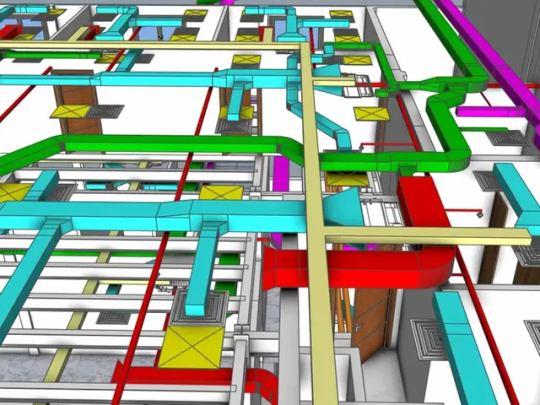
Building Information Modeling (BIM) isn't just a buzzword; it's a transformative technology that offers immense power to Mechanical, Electrical, and Plumbing (MEP) contractors. In an industry constantly battling coordination issues, budget overruns, and tight deadlines, BIM emerges as the ultimate ally, streamlining workflows and enhancing project delivery from concept to completion.
The Core Advantage: A Unified Digital Model
At its heart, BIM for MEP creates a comprehensive digital representation of a building's MEP systems. Unlike traditional 2D drawings that often lead to misinterpretations and clashes, a BIM model provides a 3D, data-rich environment where every pipe, duct, and cable is precisely located and integrated with architectural and structural elements. This unified model becomes the "single source of truth" for all project stakeholders.
Tackling Key Challenges with BIM
MEP contractors face a unique set of challenges due to the intricate nature of their installations. BIM directly addresses these pain points:
1. Clash Detection and Resolution: Say Goodbye to On-Site Surprises
One of the most significant benefits of BIM is its automated clash detection capability. By integrating MEP models with architectural and structural models, BIM software can identify conflicts (e.g., a duct interfering with a structural beam or a pipe clashing with an electrical conduit) before construction even begins. This proactive approach allows contractors to resolve issues virtually, saving enormous amounts of time, money, and rework on site. Imagine avoiding costly delays and change orders because a clash was caught in the design phase rather than during installation!
2. Enhanced Collaboration and Communication: Breaking Down Silos
BIM fosters a truly collaborative environment. All project stakeholders – architects, structural engineers, and MEP contractors – work within a shared digital model. This real-time access to the latest information ensures everyone is on the same page, minimizing miscommunication and improving coordination across disciplines. Cloud-based BIM platforms further enhance this by allowing teams to work seamlessly, regardless of their physical location.
3. Accurate Quantity Take-offs and Cost Estimation: Precision in Budgeting
BIM models are data-rich, meaning they can automatically generate accurate quantity take-offs for materials and components. This precision is invaluable for MEP contractors, enabling more realistic cost estimations and efficient procurement processes. Better budgeting means fewer surprises and a greater likelihood of staying within financial constraints.
4. Streamlined Prefabrication and Modular Construction: Boosting Efficiency
With highly detailed and coordinated BIM models, MEP contractors can leverage prefabrication and modular construction. Components and assemblies can be manufactured off-site in controlled environments, then delivered to the site for quick installation. This significantly reduces on-site labor, improves quality control, and accelerates project timelines.
5. Improved Project Visualization and Planning: A Clearer Roadmap
The 3D visualization offered by BIM provides unparalleled clarity. MEP contractors can conduct virtual walkthroughs of the building, understand spatial relationships, and optimize routing paths for systems. This enhanced visualization aids in better project planning, sequencing, and risk management, leading to smoother execution.
6. Energy Efficiency and Sustainability: Designing for a Greener Future
BIM tools can integrate analysis capabilities to simulate MEP system performance, energy consumption, and environmental impact. This allows contractors to make informed decisions that lead to more energy-efficient designs, optimizing HVAC loads, lighting systems, and plumbing layouts for sustainability and reduced operational costs throughout the building's lifecycle.
Beyond Construction: Lifecycle Management
The benefits of BIM extend beyond the construction phase. The detailed information embedded in the BIM model serves as a valuable resource for facility management and maintenance. Building owners and facility managers can use the BIM data to track system performance, schedule maintenance, and manage upgrades or renovations more efficiently throughout the building's lifespan.
Conclusion: Embrace the Power of BIM
For MEP contractors, embracing BIM is no longer an option but a strategic imperative. It transforms traditional workflows, addresses persistent industry challenges, and unlocks new levels of efficiency, accuracy, and profitability. By leveraging BIM, MEP contractors can enhance their competitive edge, deliver projects with greater precision, and become truly powerful allies in the modern construction landscape.
0 notes
Text
BIM Structural Modeling Services – What’s The Need For It?
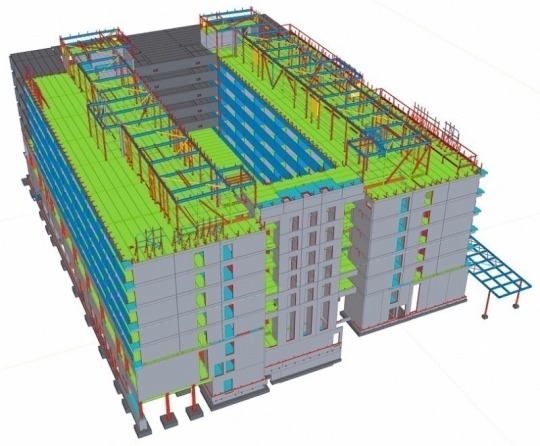
Did you take a smart step for your building with Bim Structural Modeling Services UAE? It’s a good idea to go every day! Ensuring precision, cost efficiency and speed are critical factors in the construction industry. Because various complexities that most professionals face all the time.
#Bim Service Providers In India#Architecture Bim Software#Bim Architectural Services#Structural Bim Services#Structural Bim Modeling Services#Bim Structural Detailing Services#Mepf Bim Services#Mep Fabrication Drawings#Infrastructure Bim Services India#Infrastructure Bim Modeling Services#4D Construction Sequencing#Construction Sequencing With 4D Bim#4D Bim In Construction#5D Bim Cost Estimation Quantity Take-Offs#Bim Quantity Take-Off Services#7D Bim Asset Information Model#Point Cloud To Bim Services#Cad To Bim Migration Services#Construction Documentation Set India#Facility Management Service Providers
0 notes
Text
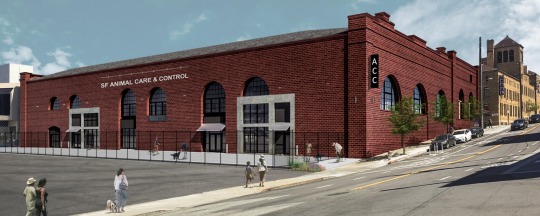
Expert Point Cloud to BIM Services - Precision and Efficiency
Our Point Cloud to BIM Services provide precise and efficient solutions for converting 3D laser scan data into detailed Building Information Models (BIM). Ideal for architects, engineers, and construction professionals, our services ensure accurate and high-quality 3D representations of existing structures. By leveraging advanced technology and expertise, we streamline project planning, enhance collaboration, and reduce errors. Trust our team to deliver exceptional Point Cloud to BIM Services, transforming your raw data into actionable, detailed BIM models for superior project outcomes.
#Point Cloud To BIM Services#Reality Capture 3D#Reality Capture Services#Reality Capture Software#AEC BIM Services#Revit BIM Services#Architectural BIM Services#Structural BIM Services#BIM Structural Services
0 notes
Text
How Inaccurate Point Cloud Data Impacts Scan to BIM Accuracy

With scan to BIM services, the accuracy of your final BIM model is only as good as the quality of the point cloud data. Using 3D Laser Scanning, Terrestrial Laser Scanning (TLS), or LiDAR Scanning for data acquisition can result in noisy or incomplete point clouds, resulting in misinterpretations in the BIM process.
An inaccurate Point Cloud to BIM model can be produced if critical building elements are not scanned in a clean, high-resolution manner. Photogrammetry and outdated reality capture techniques pose common challenges in the form of registration errors, overlapped data, and distortions. As a result, downstream coordination, quantity takeoffs, and clash detection can be affected.
Modeling for renovations, facility management, or MEP coordination requires advanced scan-to-BIM software with quality checks to convert point clouds into reliable BIM models.
Make sure your project succeeds with point cloud modeling services that prioritize precision and data integrity.
Get accurate Scan to BIM models now at Tejjy Inc..
#usa#architecture#scan_to_bim_services#point_cloud_to_bim_services#point_cloud_modeling_services#3d_laser_scan_to_bim#scan_to_bim_revit
0 notes
Text
3D Building Scanning for Accurate As-Built Plans in the USA

The Architecture, Engineering, and Construction (AEC) industry in the United States is entering a new era of precision and efficiency. One technology leading this shift is 3D building scanning, a digital solution revolutionizing how professionals plan, design, and manage building projects.
What Is 3D Building Scanning?
3D building scanning uses advanced LiDAR or photogrammetry to capture precise spatial data of an entire structure. It generates a detailed point cloud, which is then converted into as-built drawings, 2D floor plans, or BIM models using software like Autodesk Revit, AutoCAD, and Navisworks.
This technology provides highly accurate, real-world geometry that supports smarter decisions throughout the project lifecycle—from preconstruction to facility management.
Why AEC Firms in the USA Are Adopting 3D Building Scanning
✅ 1. Generate Accurate As-Built Documentation
Outdated blueprints and site conditions are a common challenge, especially in renovations. 3D scanning enables contractors and architects to work with true-to-site digital data—reducing design errors and costly rework.
✅ 2. Accelerate Commercial Renovation Planning
Whether it's a retail remodel in Los Angeles or a warehouse retrofit in Dallas, scanning provides a complete building survey in hours instead of days. This fast, non-invasive method is ideal for occupied spaces or tight project schedules.
✅ 3. Seamless Integration with BIM Workflows
Point cloud data integrates directly into Revit for scan-to-BIM modeling, improving MEP coordination, structural planning, and clash detection—key for high-rise builds, healthcare facilities, and industrial environments.
✅ 4. Enhance Facility Management & Long-Term Operations
3D building scans produce digital twins that support asset management, space planning, and system upgrades for schools, hospitals, government buildings, and more.
Where 3D Scanning Adds Value
Commercial Real Estate Development Perfect for feasibility studies, tenant fit-outs, and property marketing.
Historical Building Documentation Protect and preserve architectural details with laser-precise digital archives.
Healthcare, Education, and Public Sector Projects Ensure safety and compliance with minimal disruption to ongoing operations.
Federal and Government Infrastructure Meet BIM mandates and improve accountability with accurate project data.
Technologies Behind 3D Building Scanning
The USA’s top scanning providers use tools like:
Leica BLK360 and RTC360
FARO Focus Premium
Trimble X7
Drone-based LiDAR and photogrammetry
SLAM-based handheld scanners
Each device is chosen based on site complexity, interior/exterior scope, and level of detail required.
Choosing a 3D Scanning Partner in the USA
Here’s what to look for when selecting a scanning provider:
Proven experience in AEC-specific workflows
Capability to deliver BIM-ready Revit models
File format support (E57, RCP, DWG, IFC)
Fast turnaround for time-sensitive projects
Fully trained field teams with safety certifications
Final Thoughts
Whether you're managing a multi-phase retrofit or preparing for a LEED-certified construction project, 3D building scanning provides the accuracy, speed, and digital insight today’s AEC teams demand.
From as-built surveys for architects to clash detection models for contractors, scanning empowers your project team to build smarter and avoid surprises.
📞 Need Help with 3D Building Scanning for As-Built Documentation or Scan to BIM Modeling? Talk to experienced professionals who understand the real-world challenges of construction, renovation, and facility management. Get a free quote or schedule a pilot project for 3D laser scanning services in the USA, including point cloud to Revit conversion, as-built floor plans, and scan-to-BIM for commercial buildings.
#3d laser scanning#laser scanning#architecture#building design#building information modeling#gis#3d scanning#urban architecture#as built documentation#scant o bim#clash detection#construction
0 notes
Text
Scan to BIM Services in USA | Point Cloud to Revit by Rvtcad
Rvtcad provides reliable Scan to CAD and Scan to BIM services, successfully delivering over 300 projects annually. We accurately convert Point Cloud data into detailed 3D BIM models and 2D CAD drawings, including high-detail Revit MEP models up to LOD 500. Our experienced team specializes in creating precise as-built documentation, supporting renovation and refurbishment projects worldwide. We work with surveyors, architects, engineers, contractors, and BIM consultants using advanced scanners like Faro, Leica, Matterport, NavVis, Trimble, and GeoSLAM. Our Scan to BIM services are trusted across the USA, UK, Europe, Australia, and over 30 countries globally.
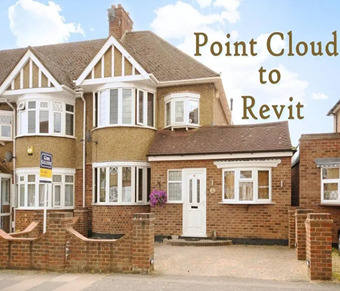
What is Scan to BIM?
Scan to BIM (Building Information Modeling) is the process of capturing existing buildings, structures, or sites through advanced 3D laser scanning technology and converting that data into a highly detailed, intelligent 3D model using software like Autodesk Revit.
The laser scanner collects millions of precise data points — known as a Point Cloud — which forms the foundation for developing an as-built, clash-free, and editable BIM model.
Simply put: Scan to BIM turns real-world spaces into digital models, helping you plan, renovate, manage, and build — smarter.
Why Scan to BIM is a Game-Changer for USA Projects
Across the United States, the demand for precision, speed, and digital workflows is rising in the construction sector. Scan to BIM offers unmatched advantages:
✅ Highly Accurate As-Built Models — Capture exact site conditions to millimeter precision. ✅ Reduced Project Risk — Minimize errors, rework, and costly delays with reliable data. ✅ Streamlined Renovations & Retrofits — Ideal for modifying or upgrading existing structures. ✅ Improved Design Coordination — Centralized models enhance collaboration across teams. ✅ Efficient Facility Management — Maintain and manage buildings using intelligent digital twins. ✅ Faster, Smarter Decision-Making — Empower your team with accurate, real-world insights.
Point Cloud to Revit — What We Deliver
At Rvtcad, we convert Point Cloud data into detailed, intelligent Revit models that meet the highest industry standards. Our models are created to your exact specifications, ensuring:
✔ Architectural Modeling ✔ Structural Modeling ✔ MEP (Mechanical, Electrical, Plumbing) Modeling ✔ LOD (Level of Detail) options: LOD 100 to LOD 400+ ✔ Clash Detection Ready Models ✔ As-Built Documentation
Our Comprehensive Scan to BIM Services (USA)
We offer a full suite of Scan to BIM and Point Cloud to Revit services tailored for the US market:
3D Laser Scanning
On-site laser scanning by expert teams using cutting-edge equipment.
High-density Point Cloud data collection for buildings, infrastructure, and complex sites.
Point Cloud to Revit Conversion
Accurate Revit models for architecture, structure, and MEP systems.
Models developed to client-specific LOD and project standards.
As-Built BIM Modeling
Reliable as-built documentation for renovations, restoration, and facility management.
Scan to 2D Drawings
Generation of precise floor plans, sections, and elevations from Point Cloud data.
MEP BIM Modeling
Comprehensive MEP models for accurate coordination and clash detection.
Industries We Serve Across the USA
Our BIM expertise supports a wide range of projects, delivering accurate Scan to BIM, CAD, and MEP modeling solutions for:
🏢 Commercial Buildings 🏠 Residential Developments 🏗 Infrastructure, Highways & Bridge Projects 🏛 Historic Preservation & Heritage Buildings ⛪ Church & Religious Structures 🏭 Industrial & Manufacturing Facilities 🏥 Healthcare & Hospital Projects ✈ Airports & Transportation Hubs 🏫 Education & Institutional Buildings 🔧 MEP Systems, Coordination & As-Built Modeling
Why Rvtcad is a Trusted Scan to BIM Partner in the USA
✔ Deep USA Market Knowledge — We deliver models that align with American building codes and standards. ✔ Experienced BIM Specialists — Our team combines technical precision with project expertise. ✔ Tailored Solutions — Every project receives a customized approach based on your needs. ✔ Rapid Turnaround Times — Fast, efficient service without compromising quality. ✔ Competitive, Transparent Pricing — High-quality BIM services that respect your budget. ✔ Strict Data Confidentiality — Your project data is protected with top-level security protocols.
Our Process — Seamless, Efficient, Reliable follow a proven, client-friendly workflow to ensure project success:
Step 1: Site Survey & Laser Scanning experts conduct precise 3D laser scans of your building or site.
Step 2: Point Cloud Generation Raw scanned data is processed into a usable, high-density Point Cloud format.
Step 3: Revit Model Development BIM team transforms the Point Cloud into a highly accurate, clash-free Revit model.
Step 4: Quality Control & The final model undergoes rigorous quality checks before secure delivery.
Applications of Scan to BIM in the USA. Our Scan to BIM solutions support:
✔ Renovation & Retrofitting ✔ New Construction Planning ✔ Historic Building Preservation ✔ Clash Detection & Coordination ✔ Facility & Asset Management ✔ Space Optimization & Interior Design ✔ Infrastructure Upgrades ✔ Construction Documentation
Partner with Rvtcad — Your Scan to BIM Experts. You need reliable, accurate, and efficient scan-to-BIM or Point cloud-to-Revit services in the USA Rvtcad is your go-to partner. With our technical expertise, USA project experience, and commitment to excellence, we help you deliver projects on time, on budget, and without surprises.
#scan to bim#point cloud to bim#3d laser scanning#scan to revit#bim laser scanning#point cloud to cad#as-built drawing#bim services#as-built drawings#scan to cad
0 notes